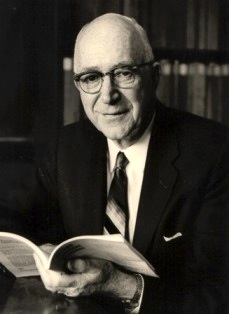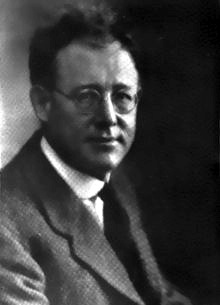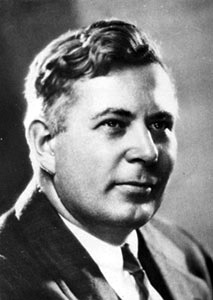Count Roman Ostoja
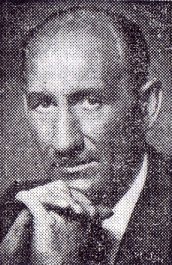
He’s an interesting character. He was the person referred to as “Jan,” in Upton Sinclair’s book about his wife’s experiments in telepathy, Mental Telepathy. Ostoja was said to have mediumistic abilities.
He was also the medium who performed at a seance attended by Albert Einstein! From my book:
“In the beginning of 1931, while Rhine was refining his experiments, an excited Sinclair wrote McDougall. “Einstein is here and we have seen a great deal of him—a very lovable person.” Einstein was visiting Mount Wilson Observatory where scientists had found evidence of cosmic background radiation, the first real proof that the universe was expanding. Einstein, in turn, wanted to show the Mount Wilson scientists the beginning of his unified field theory. The Sinclairs hoped to get Einstein to attend a seance with Roman Ostoja, the medium Mary Craig had worked with in her telepathy experiments.”
Einstein agreed! (It didn’t go well, I wrote about it in more detail in my book.) I was always a little curious about Roman Ostoja. Who was he really? For instance, was he a count, or was that part of an act? What did he look like? I found a December 1953 article about him in Fate Magazine called Man of Miracles.
According to the article, in addition to being a psychic Ostoja had other talents. He’d bury himself alive for up to days at a time “to prove that man can survive for long periods of time in a state of suspended animation without air, food or water.” It was an extremely odd performance. He’d go into a hypnotic state, where “During the process he turned his tongue backward and swallowed it, so as to allow no air to enter and leave is lungs.” Physicians would verify that he had no pulse.
Apparently Leo Tolstoy and his wife Sophia witnessed one of these demonstrations, but after an hour Sophia insisted they dig him up and sure enough he was about to suffocate. The article included a picture of Ostoja with Tolstoy.
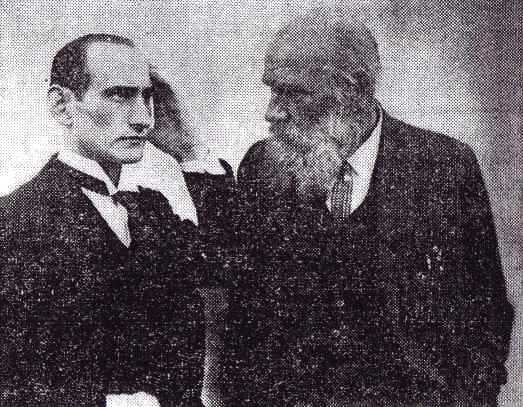
The article also mentioned another demonstration that Ostoja put on for a group of scientists and Upton Sinclair. This time a chair rose to the ceiling, books flew out of a book case, and some of the participants had their faces slapped and their hair pulled. Ultimately the article didn’t give a lot of biographical information about Ostoja.
It was written by Attila Von Sealay, another interesting character, who was also a medium himself. Attila appears briefly in my book in a section about electronic voice phenomena (EVP). This is the term people use for recording what they believe are the voices of the dead. From my book:
“It was a few days before Christmas. Raymond Bayless, a young man who lived in Hollywood, California, and his associate, medium Attila von Szalay, were testing an amplifying system they’d built in order to better hear what they believed were the sounds of the dead. When all the equipment was set up and ready to go, they asked for a voice to wish them a “Merry Christmas.” It was a paranormal version of “testing, testing.” They were checking the microphone and speakers before the experiment began. Seconds after they made their request however, a disembodied voice clearly said, “Merry Christmas and Happy New Year to you all.” What they did next was monumental. Apparently only two other people in the world had thought to do this before, and no one in the United States. When they heard a voice where no voice should have been, one of them reached over and turned on a tape recorder.”
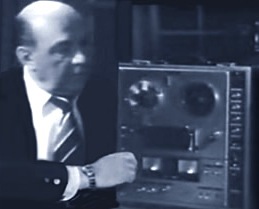
I’m sorry the pictures aren’t better. The ones of Roman Ostoja come from the Fate Magazine article, and are scans of a xerox. It occurred to me that Fate Magazine must have a treasure trove of amazing pictures. I’d love to see their archives. I’m going to contact them and ask!
The picture of Attila von Szalay (I was never able to confirm which spelling was correct, it looks like he used both) came from this website.
It’s such a small paranormal world. I plan to do another post about Raymond Bayless (the man mentioned in the EVP experiment above). Bayless would send reports of paranormal events to J. B. Rhine (the head of the Duke Parapsychology Lab) and I copied a few of them. They’re more Fortean than the kinds of things Rhine was into, but I found them interesting.
UPDATE: In this article about the seance with Einstein, George Pendle says Ostoja was really from Cleveland. I see a Cleveland reference that might be him, but I also found references on Ancestry.com to a Mieszko Roman Maszerski (in another place it’s Mieszko Roman Maszerek Maszerski) who became a naturalized citizen in the thirties, and who changed his name to Roman Ostoja. The age works, it could be him. I no longer have an Ancestry.com account, but maybe someone who does might be curious to research this further. In any case, it looks like Roman died on June 15, 1974.

